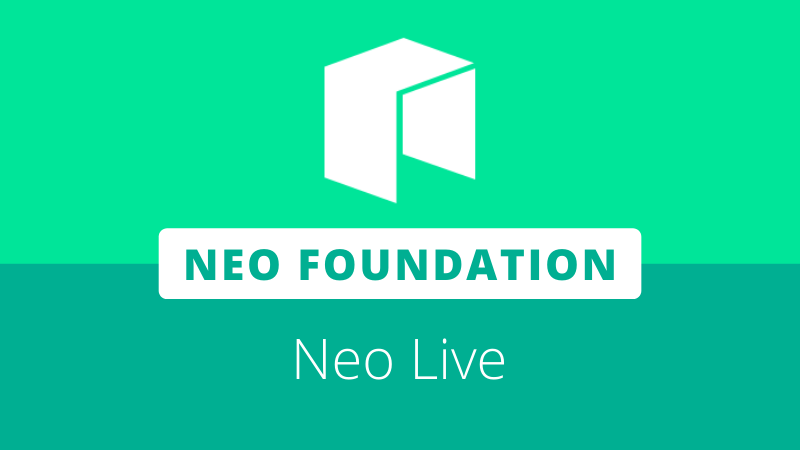
The Neo Foundation offered an in-depth overview of Neo3’s upcoming governance and economic model in the recent Neo Live Ask Me Anything. NF’s developer community strategist Longfei Wang discussed how GAS will be distributed to NEO token holders, how council members and consensus nodes will operate in the governance model, examples of issues that will be can be put to vote, and more.
Afterward, Wang answered questions from the community about how NEO token holders will vote, dApp migration from Neo2 to Neo3, block times, and support for future central bank digital currencies.
The full transcript can be found below.
Longfei: Hello everyone. My name is Longfei Wang, and I’m currently working at the Neo Foundation as a Developer Community Strategist.
I am very glad to join this Neo Live session today to share with you all the latest updates about the Neo3 governance and economic model
As Developer Community Strategist, I have been working closely with all the Neo communities to build the fundamental tools and infrastructures that provide better developer experiences to anyone wants to develop on the Neo blockchain.
Today, our main topic is about Neo3’s governance and economic model.
Along with the development of Neo3, Neo core developers are continuously discussing areas for improvement on Neo2’s governance and economic model. Therefore, the new governance and economic model is the most important and essential change in Neo3.
So, we believe it is a flexible and manageable mechanism based on dynamic comprehensive democratic voting as our founder Da Hongfei had described in his presentation last week in Sanya, China.
Let’s start with a brief overview about the Neo3 governance and economic model in the image below.
For Neo3, we will start adapting to an on-chain council governance mechanism which will introduce a brand-new role – a council who will be voted by NEO holders.
Neo aims to encourage NEO holders to participate in the governance process by voting for trustworthy council members to manage and govern the Neo blockchain.
On the other hand, the new incentive model guarantees that all parties who contribute to Neo3 governance will be rewarded correspondingly.
In short, all generated GAS will be distributed to council members, consensus nodes, and voters, as well as NEO holders based on the ratios shown on the above image.
After the very brief intro about Neo3 governance and economic model, we should have a basic idea about how it works. Let’s look at this slide next.
Overall, our new on-chain governance model will bring in some essential roles, including NEO holders and potential voters, candidates, council, consensus nodes, as well as oracle nodes and stateroot validators.
All of those roles play very important and indispensable parts in Neo3 governance, to guarantee the robustness and stability of the Neo blockchain.
Now, let’s talk about each role and what we need to know about each of them.
First, is the candidate, any individual, informal organization or anonymous organization can register to become a candidate, and seek votes from the voters. After the registration transaction is recorded on-chain, NEO holders will be able to vote for the candidate they believe is able to make the right decisions for Neo.
At this stage, candidates do not have any responsibility and duty. But council members and consensus nodes will be chosen among the candidates based on votes (1 NEO = 1 vote) they received from NEO holders for a period of 21 blocks. Theoretically, the term of tenure of the council is 21 blocks, and voters can adjust their voting strategies flexibly.
And then, is council and consensus nodes.
In the period of 21 blocks, NEO holders’ votes will be calculated and the top 21 voted candidates will become council members automatically. While a mandatory prerequisite for the voting to come into effect is that over 20% of NEO has voted.
As one of the most essential participants in Neo3 governance, council members are responsible to govern and maintain the Neo blockchain by adjusting certain Neo network parameters.
Along with rapid changes of Neo blockchain as well as market, any council members can initialize a proposal to adjust certain blockchain params to adapt to the current needs.
For instance, at some point when price of GAS goes up which leads to higher transaction fees for the whole network. A council member can propose to lower Opcode price to ensure transaction fee will not affected dramatically by the price of GAS.
Keep in mind, the proposal will only become effective when more than half of council members reach the agreement and sign the transaction to update blockchain params on-chain.
The blockchain params which could be adjusted by council members are listed in the images below. Apart from that, council members are also responsible to assign Neo related roles, such as NeoFS inner-rings, oracle nodes and StateRoot validators.
Among 21 council members, the top voted seven council members will be consensus nodes which has the authority to initiate new block proposals and eventually produce blocks to ensure the liveness and security of the Neo blockchain.
As I just mentioned, there are other roles such as oracle nodes and stateRoot validators.
As an important infrastructure of the next-generation Internet, Neo has also been working on some most important features of blockchain industry, such as oracle, cross-chain capability, and distributed storage protocol.
In order to achieve those goals to provide particular features, special roles becomes more important. Those roles will also fall into the scope of Neo3 governance, which means oracle nodes and stateRoot validators will be appointed by the council. In addition, council members will be considered first for those roles if they are willing to take extra responsibility. In return, those special roles will also be incentivized accordingly.
Now, we are getting more familiar with all the essential roles for Neo3 governance and their responsibilities. Let’s talk about how the process will look after the launch of Neo3, and what should be noticed and emphasized about each step in the process of a normal operation of Neo3 governance.
As Da Hongfei said at the 2nd Nova Global Blockchain Investment Institutions Summit, the development of TestNet is coming to the final stage and Neo3 MainNet will be launching soon. After the Neo3 MainNet launch, the initial and default council members and consensus nodes will be temporarily operated and maintained by the NF and NGD, taking the Neo2 to Neo3 migration safety and liveness of Neo3 blockchain into consideration.
First of all, all the votes will only take effect when there are more than 20% of NEO (20 million coins) are used to vote, so there will not be enough NEO migrated to Neo3 when it is launched.
Secondly, Neo network will use default council and consensus nodes when voted NEOs are less than 20%. Therefore, it is more secure and reliable if default council members and consensus nodes are operated by NF and NGD.
Once Neo3 MainNet successfully launches, early token migration will be rewarded through the Neo Early Adopter plan. Details about the Early Adopter will be announced soon, please stay tuned.
Three months after the launch of Neo3 MainNet, governance will be open to public so that NEO holders will be able to vote for the council members and consensus nodes, which will provide the liveness and safety for Neo3 Blockchain.
Once the Neo3 governance is open publicly, there will be related tools to provide the smoother experience to participate into the whole process, including new governance website, wallets and SDK support, etc. All related information will be disclosed more detailed in the coming months.
To understand the process for governance easier, the normal operation could be broken down into next steps for each epoch (21 blocks):
- Registration or campaign
- Voting
- Tenure
At any stage of the process, anyone or any organizations can register to become candidates whose information will be record on-chain via a specific registration transaction. And NEO holders will vote for their trusted candidates to become council members and votes will be re-calculated every 21 blocks.
In each epoch, top 21 voted candidates will be council and among them top seven candidates will be consensus nodes, which will be effective from next epoch.
Currently, Neo3 is still under aggressive and rapid development so it is still a bit too early to disclose detailed information about the future plan.
While once other governance related infrastructure (website, wallets and SDKs, etc) are ready, NF and NGD will start recruiting partners with significant influence within the industry to form long-term partnership and participation in council to bring benefit to the development and growth for Neo.
Ideally, the council will be formed by members from the following categories:
- Neo communities or eco projects
- Eco partners: exchanges, wallets, staking agency, etc.
- Institutions: security, colleges, research, etc.
- Others
The initial and rough roadmap will look like what is showed in the above image. In the near future, the official roadmap and detailed plan will be announced soon by NGD Eco Growth. Anyone who wants to participate into Neo3 governance to make Neo great again, please stay tuned and you are much welcome to register to become one of the council members.
Above is the brief intro about Neo3 governance mechanism, now let’s talk about what have changed for the economic model in Neo3.
And mainly how all these Neo governance participants will be rewarded for their contribution
Overall, Neo3 will continue to use the NEO and GAS dual-token mechanism, in which NEO will still be governance token and GAS as utility tokens to pay fees within Neo blockchain.
The total supply of NEO remains 100 million and also indivisible. As the governance token, NEO holders are the owners and managers of Neo blockchain, who can use their NEOs to vote for council members to operate and govern the Neo blockchain.
There will be some changes for the generation and distribution of GAS, the utility token of Neo blockchain. First, the initial supply of GAS will be 50 million to cover the need for Neo2 GAS migration. Then apart from that, there will be five GAS generated in each block which will be distributed to the Neo Council (consisting of consensus nodes and candidate nodes), voters of the Neo Council members, and also all NEO holders. The GAS inflation is also one of the on-chain params which could be adjusted by council according to the market needs.
To reward and incentivize all the participants of Neo3 governance, the generated five GAS per block will be distributed according to certain rules shown as down below:
NEO holders – 10%
Same as Neo2, this portion of GAS will not be distributed voluntarily to NEO holders. It will be calculated and distributed to NEO holder’s wallet according to the NEO holding period only after NEO holder makes a transfer of NEO. Based on a rough calculation, NEO holders will receive approximately 0.01 GAS for holding one NEO for a year.
Voters – 80%
A large portion of GAS inflation will be used to incentivize NEO holders to vote for the council. Only those who votes the right council members will receive this part of reward which will be calculated and distributed in each epoch (21 blocks).
To understand it easier, this portion will be divided into 28 (21 council members & seven consensus nodes). All the NEO holders voted any elected consensus nodes will be rewarded with 2/28th of this portion. On the other hand, NEO holders will be rewarded with 1/28th of this portion if they voted any elected council members but not consensus node. Based on a rough analysis, the APR will be around 16% if five percent of NEO have voted the elected council members correctly.
Council & consensus nodes – 10%
The rest of 10% will be used to reward 21 council members for their contributions on managing and governing Neo blockchain. Roughly, a council member will receive approximately 47.6k GAS annually, and a consensus node will receive extra GAS from network fees for producing blocks based on how much transactions flow through Neo3.
Since we have limited time, I did not share too detailed information. Hope it is enough to let you all understand the Neo3 governance and incentive.
Q1: You said the Neo network will use NF and NGD as the default council and consensus nodes when voted NEOs are less than 20%. Is this only applicable during the initial vote after Neo2 to Neo3 migration, or does this include subsequent voting after 21 blocks?
Longfei: It is just initial votes for the migration!
Q2: Are only NEO holders are able to vote in the governance system? And, to what extent can we vote on the decisions of your project?
Longfei: Yes, only NEO holders are able to vote. It is the duty of the council members to adjust params for blockchain after over 50% of them agree and signs an on-chain transaction. The lists of contents are listed in one of my slides.
Q3: Will Neo ecosystem project will migrate to Neo3?
Longfei: There will be projects migrating to Neo3 and we also will have an early adopter plan to assist those projects. The NGD Ecosystem Growth team will release more details in the near future.
Q4: During Neo3 development, what challenges are you most proud of overcoming so far, where do you see your biggest challenges?
Longfei: This is a great question. If anyone has worked with a community based project, you will understand the challenge of reaching agreement among so many talented minds and eventually developing a project everyone is proud of. This is a challenging task and also the most rewarding.
Q5: Will Neo3 be capable of operating with upcoming CBDCs?
Longfei: Neo3 will be definitely capable to operate via PolyNetwork, which is one of the most important feature for us – cross-chain interoperability. In terms of CBDC, I wish and have fingers crossed for that to happen.
Q6: To participate in the governance system, what is the minimum and maximum amounts of NEO to be able to vote?
Longfei: There is no limitation on how much you need to be able to vote. Any NEO holder can vote as long as they have NEO. But you cannot have less than one NEO.
Q7: After two million blocks, will GAS continue to go down to one GAS generated per one block?
Longfei: Nope, that has been changed in Neo3. After Neo3 is launched, the generation rate will be five GAS/block which can be adjusted by council members if they think it is necessary.
Q8: What is the GAS generation in Neo3? How much GAS is burnt and how much will be generated each block?
Longfei: Please, look my last message for the GAS generation. In terms of burn, we will burn the system fee which is the cost of executing smart contract calls.
Q9: The Neo team doesn’t speculate, but in general, do you find technical success equally important as financial success?
Longfei: I guess this is a good question for our co-founder, Da Hongfei. But as a technical guy and a developer, I believe technical success is equally important as financial success. I would be so proud of the project I have worked on, if it is one of the technologies that is changing the future.
Q10: Can you name any date we can expect the Neo3 to be live?
Longfei: How can I name any date for Neo3 release? It is impossible for any big software release. A date, come on, we cannot be that accurate. As I can say, the team and communities are working on a great project and some huge changes and improvement for Neo which will be game changers. Those innovations and upgrades take time and also patience for testing. Please stay with us, and give the team some trust and patience. We will make Neo great.
Now Preview4 was released and TestNet is coming in Q1 2021. We will give some time for project migrations, early project development, token migration development. Once those are ready, MainNet will not be far behind.
Q11: What is time for each block generated in Neo3?
Longfei: The current setup for block time is 15 seconds. But, this can change on the Neo3 launch once the Neo core devs are confident with their optimization, or if council members propose to change the params. We want to make sure Neo is a stable and secure blockchain for smart economy and digital asset, not only focus on transactions per second.
Note: Some edits have been made for formatting and readability.
The full AMA can be found at the link below:
https://t.me/NEO_EN/106996
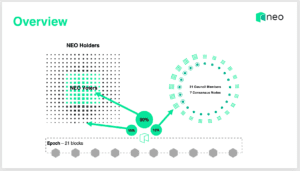

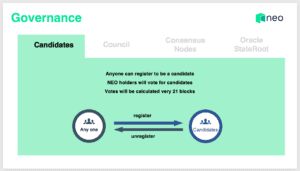

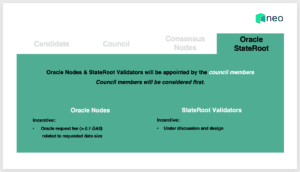
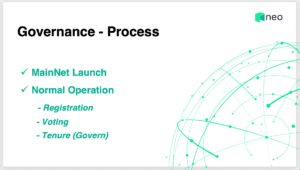

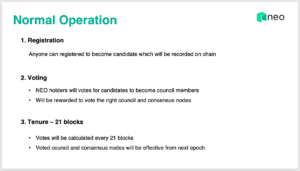
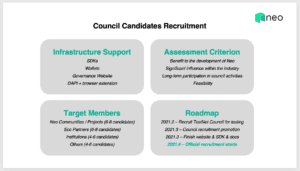

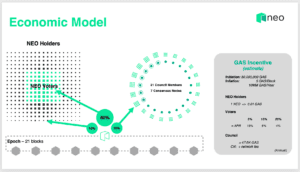






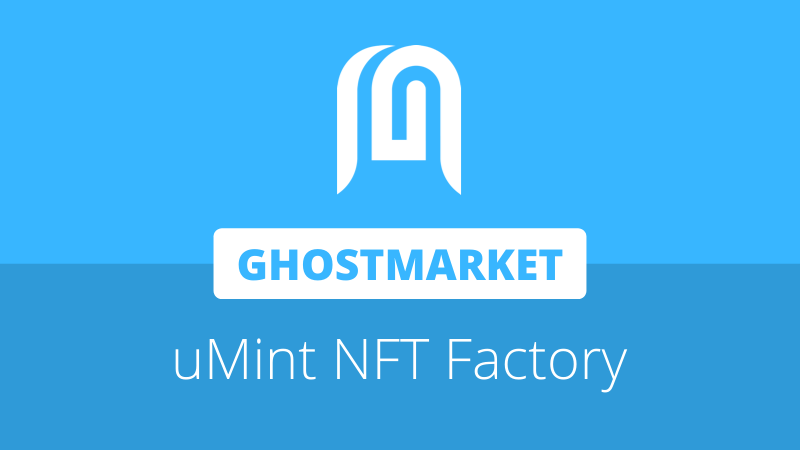
About The Author: Dylan Grabowski
Dylan is a reformed urban planner with a passion for covering the Neo ecosystem. His objective as a writer for Neo News Today is to report news in an objective, fact-based, non-sensational manner. When not behind a computer screen, he can be found in the mountains rock climbing. Find Dylan on Twitter (@GrabowskiDylan).
More posts by Dylan Grabowski